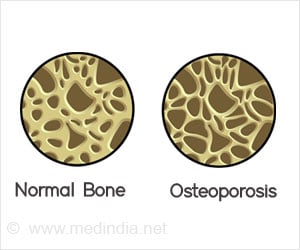A genetically-modified version of the rabies virus is helping scientists at Harvard to trace neural pathways in the brain.

"You may be familiar with the term connectome," Uchida explained. "The basic idea is we want to understand the brain in terms of connectivity and the various cell types. In this case, we're examining long-range connections; that is, how other parts of the brain connect directly to dopamine neurons.
Dopamine neurons are thought to be important for processing reward and regulating motor output. "By understanding their inputs, we might be able to better understand how the function of dopamine neurons is regulated, and, in turn, how addiction happens, and how Parkinson's disease and other motor-control disorders are affected by problems with dopamine neurons," Uchida continued. "And because this application provides us with very quantitative data, it's possible that this is a technique that might be useful in attacking the causes of those diseases."
Creating that connectivity diagram, however, is anything but easy.
While both the VTA and SNc are known to have high concentrations of dopamine neurons, Uchida chose to examine both areas because the cells in the two regions fire differently.
"We wanted to know what the difference was, generally," Uchida said. "That's why we compared the inputs to both structures. Based on how other neurons are connected there, we can start to explain why these two regions of the brain do different things."
Advertisement
Before they infect genetically-engineered mice with the rabies virus, however, they first inject the animals with a pair of "helper" viruses. The first causes dopamine neurons to produce a receptor protein, meaning the rabies virus can only infect dopamine neurons, while the second restores the virus' ability to "hop" from one neuron to another.
Advertisement
The results, as depicted in images of a mouse's brain showing the wealth of connections to dopamine neurons, show that a number of brain regions – including some previously unknown areas – are connected to dopamine neurons.
"We found some new connections, and we found some that we suspected were there, but that were not well understood," Uchida said. "For example, we found that there are connection between the motor cortex and the SNc, which may be related to SNc dopamine neurons' role in motor control.
"Other connections, though, were more intriguing," he continued. "We found that the subthalmic nucleus preferentially connects to SNc neurons – that's particularly important because that region is a popular target for deep brain stimulation as a treatment for Parkinson's."
Often used as a treatment for Parkinson's and a variety of other disorders, deep brain stimulation involves implanting a device, called a brain pacemaker, into a patient's brain. The device then electrically stimulates specific regions of the brain, helping to mitigate symptoms of the disease.
"The mechanism for why deep brain stimulation works is not completely understood," Uchida said. "There was speculation that it might have been inhibiting neurons in the subthalmic nucleus, but our findings suggest, because there is a direct connection between those neurons and dopamine neurons in the SNc, that it is actually activating those neurons. I don't think this explains the entire mechanism for why deep brain stimulation works, but this may be part of it."
"This work also offers us a roadmap for other areas we might investigate, so now we can target those areas and record from them," Uchida added. "This is a critical step for future investigations."
Source-Eurekalert














